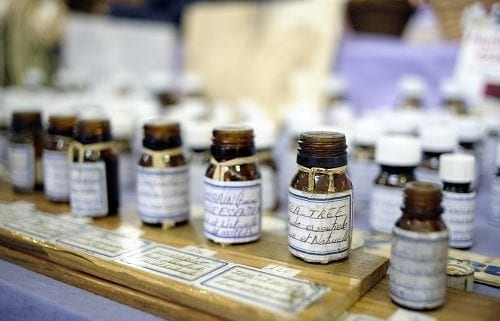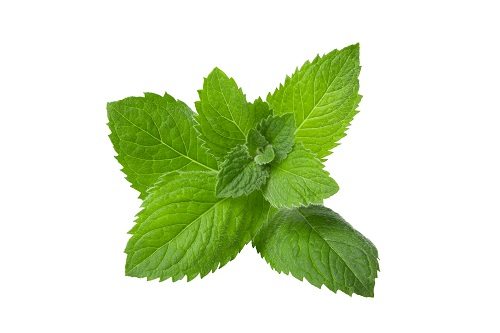Tea Tree Oil History
The Emergence of Tea Tree Oil as a Popular Herbal Medicine
Tea tree oil history has come full circle as a highly recommended herb with medicinal applications. As more consumers favor natural cures over pharmaceutical options, it is interesting to review the origins of many of the first medical herbal treatments discovered. Tea tree oil has an interesting history and has once again come to the forefront as a natural alternative to pharmaceutical solutions, recommended and used as an antifungal and antiseptic solution to treat athlete’s foot and other skin problems.
Used first by the aborigines in Australia to treat skin infections, tea tree oil history began long before James Cook’s arrival on the scene. However, Cook is credited with the discovery of a “spicy tea”in 1732, during his travels to Australia. He called the tree, tea tree. The leaves from the Melaleuca Alternifolia tree were used to brew a fragrant tea that the captain described as refreshing. For over a century, this discovery was so useful that it became the “go to” medicine used to treat skin infections for almost two centuries before Penicillin was created in 1928.
Timeline Highlights
- 1732 – Captain James Cook discovered the Melaleuca Alternifolia tree and used the tree’s leaves to brew tea.
- 1769 – Tea tree oil production begins as the oil is removed from tea tree leaves using a process that does not crush the leaves or use heat.
- 1770 – Captain James Cook met with the aborigines in Australia to discuss the ways they used the trees’ leaves for healing. Cook brought the leaves back to a doctor for testing. The doctor confirmed the claims of the aborigines and declared tea tree leaves to hold antiseptic qualities.
- 1772 – Captain Cook and his soldiers drank tea made from the Melaleuca Alternifolia tree to prevent scurvy.
- 1904 – Chemist George Korner used tea tree oil in a natural cream sold as a beauty product.
- 1922 to 1923 – Chemist Dr. A. R. Penfold declared that the essentials oils of the tea tree were much stronger than carbolic acid which was the widely accepted antiseptic being used in that period. As the curator and chemist on staff at the Government Museum of Technology and Applied Sciences located in Sydney, he researched the tea tree leaves and declared his findings. He claimed that tea tree oil as a non irritant option and a very powerful antiseptic was about thirteen times stronger than the standard antiseptic bactericide currently used.
- 1929 – FR Morrison and Dr. Arthur Penfold spark continued research into tea tree leaves by publishing a paper entitled, Australian Tea Trees of Economic Value. The value of tea tree oil was primarily a secret before the 1920s, with mainstream Australians largely unaware of it.
- 1930 to 1933 – Several well-renowned experts published papers about the medicinal benefits of using tea tree oil. The Medical Journal or Australia, The Australian Journal of Pharmacy, the British Medical Journal and Mr. EM Humphrey all published papers in support of the use of tea tree oil as a germicide.
- 1938 – Dr. Penfold publishes an article describing his positive findings when using tea tree oil as a treatment for skin and mouth infections.
- 1939 to 1945 – During World War II, many soldiers were grounded and put in the hospital because of a treatment-resistant foot fungus. Then an aborigine brought some of the oil to the hospital as a cure. The doctors used the oil on the soldiers’ feet. In a few short days, the fungus was gone.
- 1972 – A study was published about foot problems and how tea tree oil relieved or completely eliminated many or all of the symptoms. The study included 60 patients with 38 of those patients getting excellent results from tea tree oil. Foot conditions studied were athlete’s foot, fungal infections under the toenail, hammer toes, bunions, peeling skin, cracked skin, and corns.
- 1990 – Tea tree oil is being used in many products, growing in popularity as a natural germicide and fungicide. It is used in lip balm, soap, toothpaste, and mouthwash.
- 1992 – Tea tree oil becomes a household product used for cleaning. It is used as a safe and chemical-free disinfectant for the bathtub and toilet.
- 1993 to 1994 – According to the International Herald Tribune, sales of tea tree oil products reach about $6.3 million Australian dollars in 1993, with $9 million projected sales for 1994.
- 2007 – The Age reported that in a study conducted on 3800 patients, 71 tested positive and suffered from dermatitis reacting negatively to tea tree oil.
Recent Developments
Any consumer who wants tea tree oil products can find them in most health food stores. Used now in creams, shampoos, cosmetics, cleansers, ointments, household cleaners and many other products, the buying public is turning to this old, tried and true tea leaf for solutions to common problems. As positive as most of the reports are on tea tree oil, there have been some concerns along the way. Skin sensitivity issues has called the safety of this herbal solution into question. Murmurs about needing to be regulated have been heard and are always a concern for most herbal medicine sellers and producers. Herbalists recognize the ongoing threat herbal medicines represent to the established pharmaceutical industry.
Conclusion
There is no denying the value of tea tree oil as a natural herb with many uses. Only time will tell whether it can withstand the scrutiny of governmental regulators. In terms of sales and acceptance, tea tree oil has been well received by the public. The challenge that consumers and regulators face is determining what is an acceptable risk to take based on the benefits offered. Is a prescription warranted?
Comparatively, tea tree oil should be evaluated alongside other medical treatments purchased over the counter. How does it compare to other mild treatments, such as aspirin? Some people have a terrible reaction to aspirin, but it has not been taken off the market. Tea tree oil has proven its worth over time. Its benefits have eased the lives of many.




Leave a Reply
Want to join the discussion?Feel free to contribute!